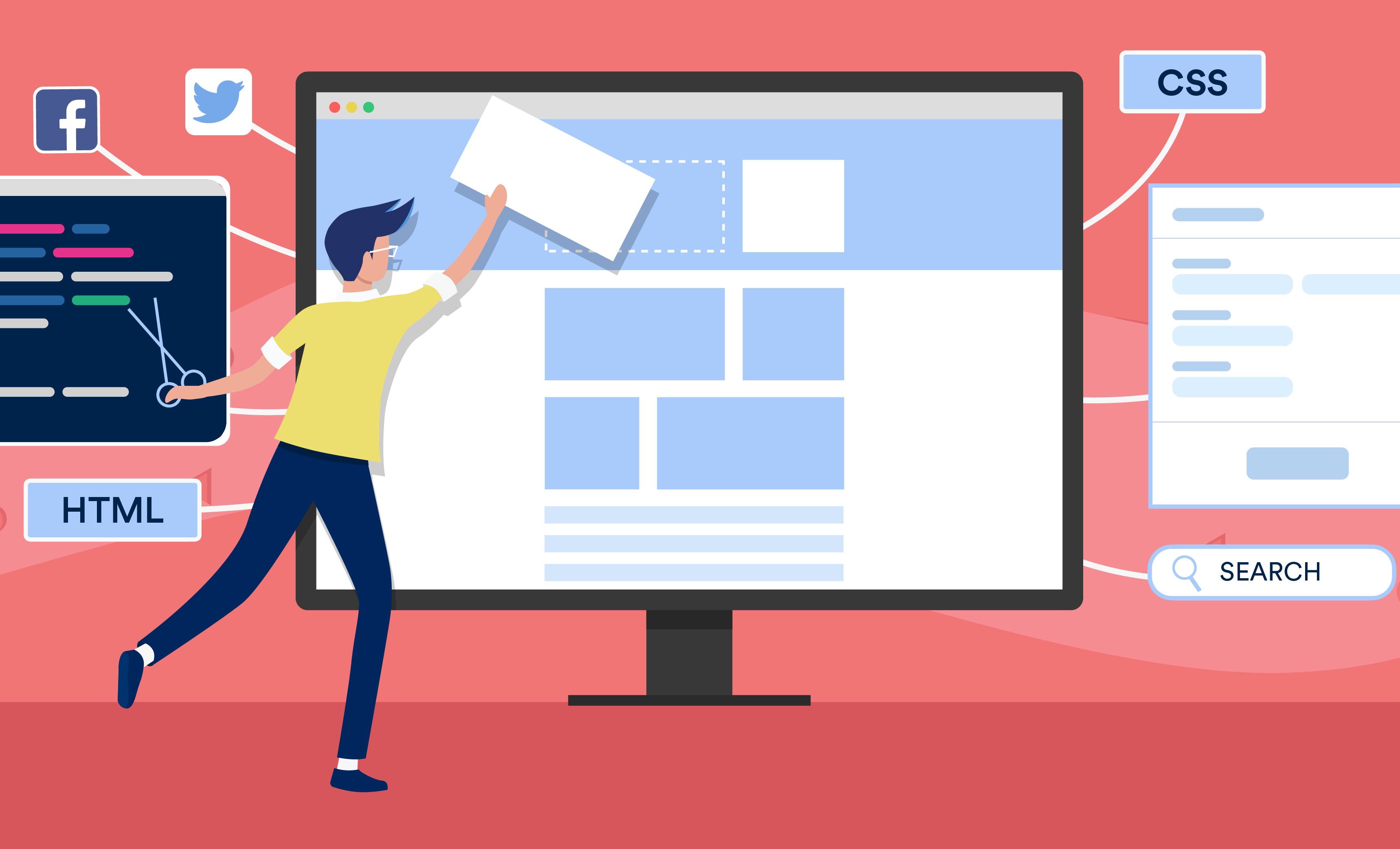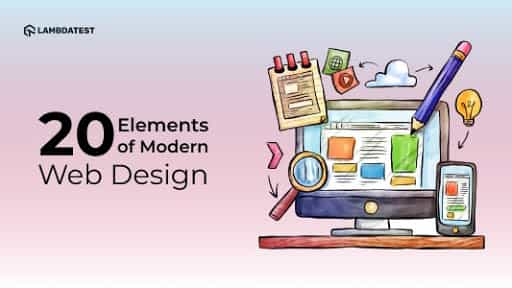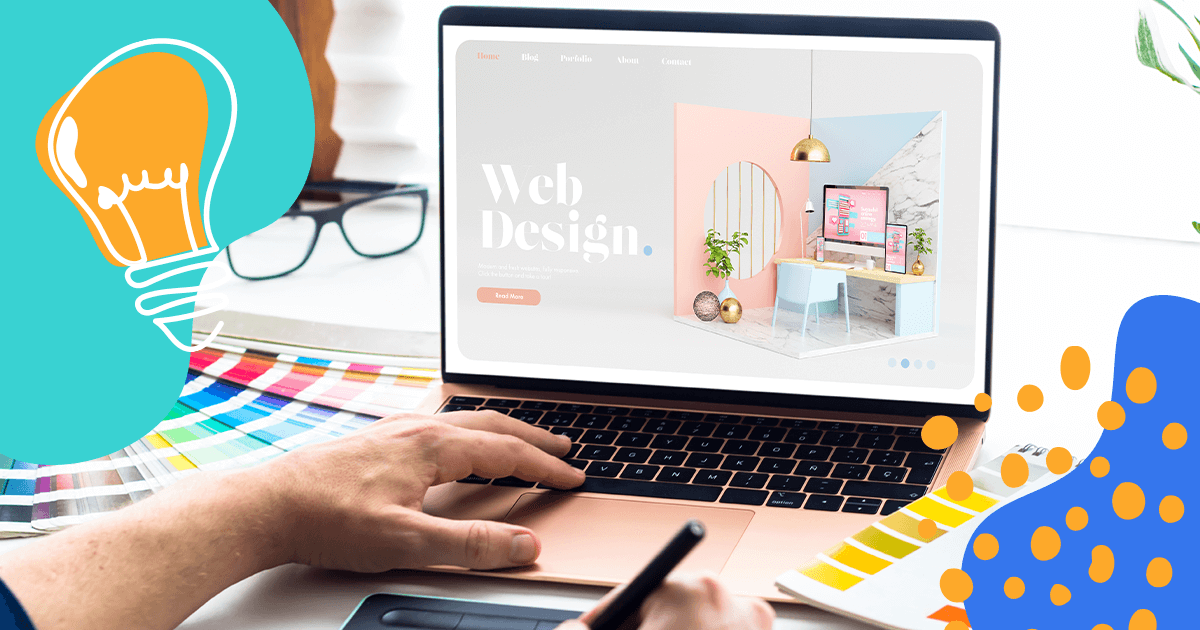All Categories
Featured
Table of Contents
- – 34 Of The Best Website Designs To Inspire You ...
- – Web Design - Entrepreneur Tips and Tricks:
- – Indianapolis Web Design And Digital Marketing...
- – Awwwards - Website Awards - Best Web Design T...
- – Web Design - Entrepreneur Tips and Tricks:
- – Webpage Design (Article) - Further Learning -...
- – Google Web Designer - Home Tips and Tricks:
- – Web Design Ledger: Homepage Tips and Tricks:
- – Top Web Design Companies - Find Web Designer...
- – Web Design Services By Freelance Website Des...
- – Powderkeg: Web Design Madison, Wi Tips and T...
34 Of The Best Website Designs To Inspire You In 2022 Tips and Tricks:
Quick summary Functionality and the utility, not the visual style, determine the success or failure of a site. Since the visitor of the page is the only individual who clicks the mouse and therefore chooses whatever, user-centric design has actually established as a standard technique for successful and profit-oriented web design - web design frederick md.
and the energy, not the visual style, identify the success or failure of a website. Given that the visitor of the page is the only individual who clicks the mouse and for that reason chooses everything, user-centric design has actually ended up being a basic technique for effective and profit-oriented web design. If users can't utilize a function, it may as well not exist.
g. where the search box ought to be positioned) as it has actually already been performed in a variety of articles; rather we concentrate on the approaches which, used properly, can result in more advanced style decisions and streamline the process of viewing presented information. Please notice that you may be thinking about the usability-related short articles we have actually published prior to: Principles Of Great Site Style And Reliable Web Design Standards, In order to utilize the concepts appropriately we first need to understand how users interact with sites, how they think and what are the standard patterns of users' behavior.
Web Design - Entrepreneur Tips and Tricks:
Visitors look at each new page, scan some of the text, and click the very first link that catches their interest or vaguely looks like the thing they're trying to find. There are big parts of the page they do not even look at. Most users search for something intriguing (or useful) and clickable; as quickly as some promising prospects are found, users click.
If a page supplies users with high-quality content, they are ready to jeopardize the content with ads and the design of the site. This is the reason not-that-well-designed sites with premium content get a great deal of traffic over years. Material is more important than the design which supports it.

Users do not read, they scan. Notification how "hot" locations abrupt in the middle of sentences. This is common for the scanning procedure. Extremely basic concept: If a website isn't able to fulfill users' expectations, then designer stopped working to get his task done effectively and the business loses cash. The greater is the cognitive load and the less instinctive is the navigation, the more willing are users to leave the site and search for alternatives.
Indianapolis Web Design And Digital Marketing Agency Tips and Tricks:
Neither do they scan web page in a linear style, going sequentially from one site section to another one. Rather users satisfice; they choose the first affordable choice. As quickly as they discover a link that looks like it may cause the objective, there is a really good opportunity that it will be immediately clicked.
It does not matter to us if we comprehend how things work, as long as we can utilize them. If your audience is going to imitate you're developing billboard, then style fantastic signboards." Users desire to have the ability to manage their internet browser and depend on the consistent information presentation throughout the site.
If the navigation and site architecture aren't instinctive, the variety of enigma grows and makes it harder for users to understand how the system works and how to receive from point A to point B. A clear structure, moderate visual hints and easily identifiable links can help users to find their path to their aim.
Awwwards - Website Awards - Best Web Design Trends Tips and Tricks:

claims to be "beyond channels, beyond products, beyond distribution". What does it imply? Since users tend to check out sites according to the "F"-pattern, these 3 statements would be the very first aspects users will see on the page once it is packed. The style itself is basic and instinctive, to comprehend what the page is about the user needs to browse for the response.
When you've achieved this, you can communicate why the system is useful and how users can benefit from it. Don't Waste Users' Persistence, In every task when you are going to use your visitors some service or tool, try to keep your user requirements minimal.
Novice visitors want to, not filling long web types for an account they may never ever use in the future. Let users explore the site and discover your services without forcing them into sharing personal information. It's not affordable to force users to get in an email address to test the function.
Web Design - Entrepreneur Tips and Tricks:
Stikkit is an ideal example for an user-friendly service which requires almost absolutely nothing from the visitor which is unobtrusive and soothing. Which's what you desire your users to feel on your website. Apparently, Termite needs more. The registration can be done in less than 30 seconds as the type has horizontal orientation, the user does not even require to scroll the page.
A user registration alone suffices of an impediment to user navigation to reduce inbound traffic. 3. Handle To Focus Users' Attention, As sites offer both static and vibrant material, some elements of the user interface bring in attention more than others do. Certainly, images are more attractive than the text simply as the sentences marked as vibrant are more appealing than plain text.
Focusing users' attention to particular locations of the site with a moderate use of visual aspects can assist your visitors to receive from point A to point B without thinking about how it actually is supposed to be done. The less question marks visitors have, the they have and the more trust they can establish towards the business the website represents.
Webpage Design (Article) - Further Learning - Khan Academy Tips and Tricks:
Strive For Function Exposure, Modern web styles are generally criticized due to their technique of directing users with aesthetically appealing 1-2-3-done-steps, big buttons with visual effects etc. From the design viewpoint these elements actually aren't a bad thing.
The site has 9 primary navigation alternatives which show up at the first glimpse. The option of colors might be too light, though. is an essential principle of effective interface design. It does not really matter how this is achieved. What matters is that the content is well-understood and visitors feel comfy with the way they interact with the system.
Instead a rate: simply what visitors are looking for. An ideal solution for effective writing is touse short and succinct expressions (come to the point as quickly as possible), use scannable design (categorize the material, use several heading levels, utilize visual components and bulleted lists which break the circulation of consistent text blocks), usage plain and objective language (a promotion doesn't need to sound like advertisement; give your users some sensible and objective factor why they should use your service or remain on your website)6.
Google Web Designer - Home Tips and Tricks:
Users are hardly ever on a site to enjoy the style; in addition, most of the times they are trying to find the information regardless of the style - web design frederick md. Aim for simplicity rather of intricacy. From the visitors' perspective, the very best site style is a pure text, without any ads or further material blocks matching exactly the inquiry visitors used or the content they have actually been trying to find.
Finch plainly presents the details about the website and gives visitors a choice of options without overcrowding them with unnecessary material. 7. Do not Be Scared Of The White Area, Actually it's actually tough to overstate the value of white space. Not only does it help to for the visitors, but it makes it possible to perceive the information presented on the screen.
Complex structures are more difficult to check out, scan, examine and work with. If you have the option in between separating 2 design segments by a noticeable line or by some whitespace, it's typically better to utilize the whitespace service. (Simon's Law): the better you handle to provide users with a sense of visual hierarchy, the much easier your content will be to perceive.
Web Design Ledger: Homepage Tips and Tricks:
The exact same conventions and guidelines need to be used to all elements.: do the most with the least amount of cues and visual elements. Clarity: all components should be designed so their significance is not unclear.
Conventions Are Our Pals, Standard design of site aspects doesn't lead to a boring website. In reality, as they decrease the discovering curve, the need to find out how things work. For example, it would be a functionality nightmare if all websites had different visual discussion of RSS-feeds. That's not that various from our regular life where we tend to get used to basic principles of how we arrange information (folders) or do shopping (positioning of products).
understand what they're getting out of a site navigation, text structure, search placement etc. A case in point from functionality sessions is to translate the page in Japanese (presuming your web users don't understand Japanese, e. g. with Babelfish) and provide your functionality testers with a task to discover something in the page of various language.
Top Web Design Companies - Find Web Designers Here Tips and Tricks:
Test Early, Test Typically, This so-called TETO-principle should be applied to every web design task as functionality tests frequently provide into considerable problems and concerns related to a provided design. Test not too late, not too little and not for the wrong factors.
Some essential points to keep in mind: according to Steve Krug, and screening one user early in the project is better than testing 50 near the end. Accoring to Boehm's first law, mistakes are most frequent during requirements and style activities and are the more pricey the later on they are removed.
That means that you create something, test it, repair it and after that test it once again. There might be problems which haven't been found throughout the preliminary as users were practically blocked by other problems. usability tests. Either you'll be indicated the issues you have or you'll be pointed to the absence of significant design flaws which remains in both cases a beneficial insight for your project.
Web Design Services By Freelance Website Designers - Fiverr Tips and Tricks:

This holds for designers. After you have actually worked on a site for couple of weeks, you can't observe it from a fresh perspective anymore. You understand how it is developed and for that reason you know exactly how it works you have the wisdom independent testers and visitors of your site would not have.
It can be linked to other locations such as graphic design, user experience, and multimedia arts, but is more appropriately seen from a technological standpoint. It has actually ended up being a large part of people's everyday lives. It is tough to picture the Internet without animated graphics, various styles of typography, background, videos and music.

During 1991 to 1993 the World Wide Web was born. Text-only pages might be viewed using a simple line-mode web browser. There had been no integrated method to graphic design aspects such as images or noises.
Powderkeg: Web Design Madison, Wi Tips and Tricks:
The W3C was created in October 1994 to "lead the Internet to its full capacity by developing typical procedures that promote its advancement and ensure its interoperability." This prevented any one business from monopolizing a propriety internet browser and programming language, which might have modified the impact of the Internet as a whole.
As this has occurred the technology of the web has likewise carried on. There have actually likewise been considerable changes in the way people use and access the web, and this has altered how sites are designed. Since completion of the internet browsers wars [] new web browsers have been released. A lot of these are open source indicating that they tend to have faster development and are more encouraging of brand-new requirements.
Learn more about Lovell Media Group LLC or TrainACETable of Contents
- – 34 Of The Best Website Designs To Inspire You ...
- – Web Design - Entrepreneur Tips and Tricks:
- – Indianapolis Web Design And Digital Marketing...
- – Awwwards - Website Awards - Best Web Design T...
- – Web Design - Entrepreneur Tips and Tricks:
- – Webpage Design (Article) - Further Learning -...
- – Google Web Designer - Home Tips and Tricks:
- – Web Design Ledger: Homepage Tips and Tricks:
- – Top Web Design Companies - Find Web Designer...
- – Web Design Services By Freelance Website Des...
- – Powderkeg: Web Design Madison, Wi Tips and T...
Latest Posts
Beginner's Guide: How To Learn Web Design At Home - Medium Tips and Tricks:
Why Web Design Is Dead - - Ux Magazine Tips and Tricks:
Web Design Inspiration : The Best Website Design Ideas Tips and Tricks:
More
Latest Posts
Beginner's Guide: How To Learn Web Design At Home - Medium Tips and Tricks:
Why Web Design Is Dead - - Ux Magazine Tips and Tricks:
Web Design Inspiration : The Best Website Design Ideas Tips and Tricks: